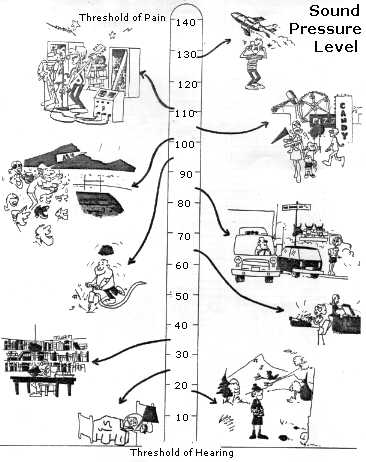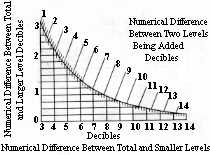Noise, commonly defined as unwanted sound, is an environmental phenomenon to which man is exposed before birth and throughout life. Noise can also be considered an environmental pollutant, a waste product generated in conjunction with various activities of man. Under the latter definition, noise is any sound--independent of loudness--that may produce an undesired physiological or psychological effect in an individual and that may interfere with the social ends of an individual or group. Those ends include all of man's activities-- communication, work, rest, recreation, and sleep.
Society has, since antiquity, made attempts to abate and control noise. The Romans enacted perhaps the first prohibitory noise law when, by popular decree, chariot movements were prohibited in the streets of Rome during the night. In England, the first reported court decision concerning noise abatement is dated in the 13th century. Today, many communities in the United States, including Albuquerque, have anti-noise ordinances, although these statutes vary widely in standards, scope, and degree of enforcement.
Albuquerque's noise control ordinance was placed into effect in June 1975. The Environmental Health Department's Consumer Protection Division personnel are responsible for enforcing the ordinance. Noise control enforcement may involve many sources of excessive noise: radios, stereos, television, live bands, machinery, equipment fans, air conditioners, construction, vehicle repairs, motor vehicles, and general noise.
The ordinance stipulates a property-line value in which the noise level emitted must not exceed 50 decibels (dB) or 10 decibels above the ambient level, whichever is greater. For example, if you are playing a stereo, the sound level traveling from the stereo to the neighboring property lines cannot be more than 10 decibels higher than the general noise level existing before the stereo was turned on.
Noise level meters are used to measure the sound level as it is crossing the property line. The meters are similar to radar meters the police use for speed detection; however, instead of detecting an object in motion, it detects air pressure (sound waves) in motion and produces a numbered level called decibels.
If an individual produces a sound level (noise) louder than the noise ordinance allows, he or she can be issued a citation by the police or the staff from the Environmental Health Department. The fine at the window is $50, and if found guilty in a court hearing, the offender could be fined as much as $500 or 90 days in jail, or both.
The most prevalent noise sources in Albuquerque are from ground transportation such as cars and trucks on the interstates and major streets. The city becomes alive with noise beginning around 6:00 a.m. The ambient noise level on a typical workday at 6:00 a.m. will normally be around 40 decibels. As people leave for work, the ambient noise level will increase to 58-60 decibels and stay at this level until after evening rush hour and then return to 40 decibels around midnight. Other more irritating noises, which are shorter in duration than traffic but more intense, are rock bands, dirt bikes, loud stereos, and airplanes. More complaints are lodged as a result of these than traffic noise.
Ordinances across the nation were not designed to reduce the overall background noise levels within our municipal boundaries. It would be impossible to accomplish this because cities, including
Albuquerque, are experiencing growth, which means higher background noise levels. Noise ordinances have been effective in reducing those irritable, noisy occurrences that can be controlled by developing standards and placing the responsibility on the noise maker. The ordinance has been effective in Albuquerque.
 |
Maximum allowable sound level from car exhaust under city's noise control ordinance: 96
Sound at 155 decibels can burn the skin.
Sound at 180 decibels can kill.
For more information about sound, noise, and noise testing, call the Noise Control Office at 766-7435 or 768-2600.
 |
To add levels, enter the chart with the numerical difference between two levels being added. Follow the line corresponding to this value to its intersection with the curved fine, then left to read the numerical difference between total and larger level. Add this value to the larger level to determine the total.
Example: Combine 75 dB and 80 dB. The difference is 5 dB. The 5-dB fine intersects the curved line at 1.2 dB on the vertical scale. Thus the total value is 80 +1.2 or 81.2 dB.
To subtract levels, enter the chart with the numerical difference between total and larger levels if this value is less than 3 dB. Enter the chart with the numerical difference between total and smaller levels if this value is between 3 and 14 dB. Follow the line corresponding to this value to its intersection with the curved line, then either left or down to read the numerical difference between total and larger (smaller) levels. Subtract this value from the total level to determine the unknown level.
Example: Subtract 81 dB from 90 dB. The difference is 9 dB. The 9-dB vertical line intersects the curved line at 0.6 dB on the vertical scale. Thus the unknown level is 90 - 0.6 or 89.4 dB.
(Up to Section V, Back to Neighborhoods, On to Occupational Health)